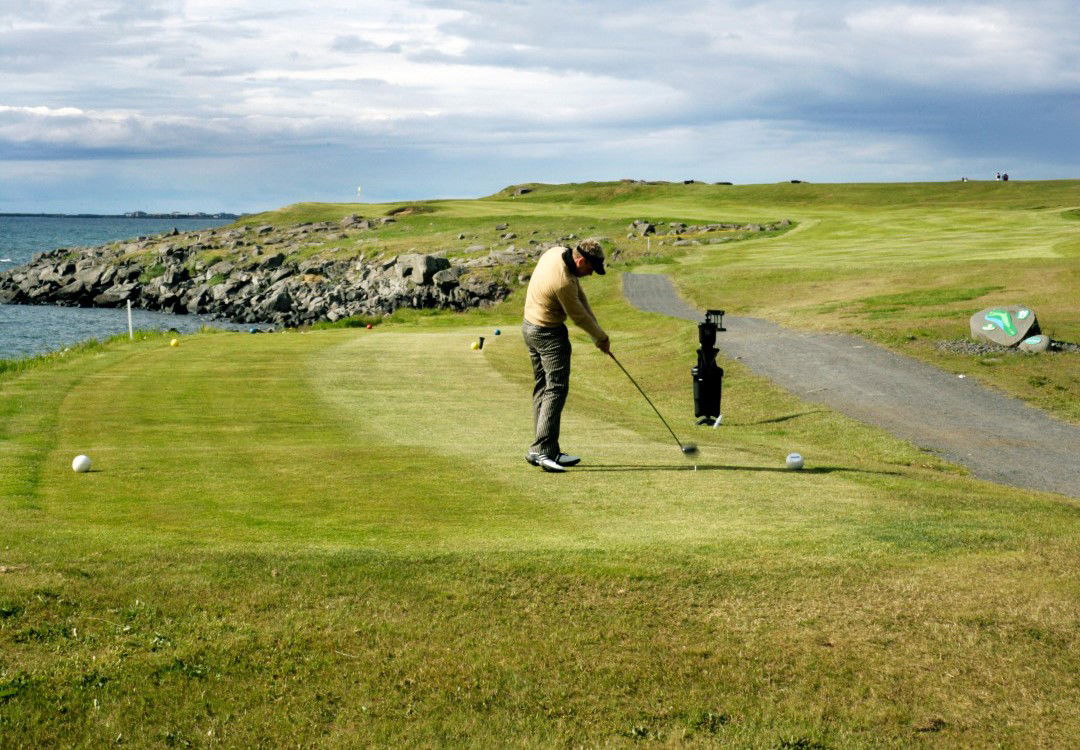
Imago
Via Keilir Golf Club

Imago
Via Keilir Golf Club
Golf is a sport of intricacies and minute adjustments. From posture and stance to the way you compress a golf ball, everything builds to whether the swing turns into a successful birdie or a punishing bogey. Similarly, even the way you hold your club can significantly affect the trajectory of the ball. Since grip is the only connection we have with the club, it becomes intensely important to perfect that to maximize connection, power, and distance off the tee.
Watch What’s Trending Now!
While there is no one-size-fits-all grip solution in golf, we can take a look at how the elites approach their irons and wedges. To simplify the nuances, here are three universal ways to grip a golf club like the elites.
Top Stories
LPGA Star Issues Statement After Being Disqualified from $2M Golf Event: ‘Disappointed’

LIV Golf Signs a Deal With PGA Tour’s 20-Year-Long Partner in Another Shocking Move

Brandel Chamblee Calls Out Special Treatment of Jordan Spieth & Rickie Fowler During PGA Tour Events

Charlie Woods Matches 34-Year-Old Tiger Woods Record Despite Turbulent Year

Rickie Fowler Comes Clean on Health Issue Stopping Him from Playing PGA Tour Events

ADVERTISEMENT
#1: Interlocking grip
Drawing right from legends like Tiger Woods and Jack Nicklaus, the interlocking grip provides a unified feel and improved control over the clubface. Essentially locking both hands together, this grip is particularly beneficial for golfers with smaller hands or less raw strength. The conjoined hands help the club work more efficiently through the impact.
To get this grip, begin by gripping the club with your left hand (for right-handed golfers). Then, place your right hand right above the other hand snugly so that your right pinky finger wedges perfectly between your left index and middle fingers. This locks both hands together, improving wrist synchronization, clubface control, and a connected swing path.
The key to mastering this grip lies in relaxed connection rather than tension. Your locked fingers shouldn’t feel like they’re being squeezed together. Too much pressure could stagnate movement while interfering with the swing path.
ADVERTISEMENT
The most important thing in the golf swing, yet probably the most common failing in poor golfers. The grip. Also the hardest thing to change. @europentour @pgatour #golfathome #staysharp @wilsongolf #PaddysGolfTips pic.twitter.com/gfScvzIYYb
— Padraig Harrington (@padraig_h) August 31, 2020
ADVERTISEMENT
#2: Overlapping grip
Much like the interlocking grip, this is a grip of its own with a different set of specifications and benefits. This is, however, much more widely used than its counterpart, first popularized by Harry Vardon in the 20th century. Hence, it is also often termed the Vardon grip, with most pros preferring this grip for its unique blend of comfort, control, and stability.
The grip starts in the same way as the interlocking grip, with the left hand gripping the club. The right hand follows on top with its pinky finger gently lying over the left index and middle fingers. The key point to note is that the pinky must rest softly on the fingers instead of intertwining together. A rigid grip can defeat the purpose of this grip.
The Vardon grip encourages both hands to work as one unit while still allowing the wrists to stay fluid and flexible throughout the swing. Most preferred by golfers with larger hands or stronger forearms, Rory McIlroy, Phil Mickelson, Brooks Koepka, and Jordan Spieth are among the numerous other elites who use this grip. It allows smooth power transfer from the body to the golf ball, generating more consistent ball-striking and better approach shots.
ADVERTISEMENT
#3: Ten-finger grip
One of the most intuitive grips, this might be where most beginners start. As the name suggests, all ten fingers are in direct contact with the club. No interlocking or overlapping. If you find intertwining your fingers uncomfortable and painful, switch to a more independent grip that demands less flexibility.
To do this, grip the club with your left hand before placing your right hand exactly on top of it. However, to ensure a perfect grip, make sure there isn’t even a sliver of distance between the two hands. That could make wrist function too independent, worsening wrist synchronization.
ADVERTISEMENT
For weaker golfers, this grip could help generate increased power while accounting for the restricted wrist flexibility. However, the ten-finger grip should not be your only horse if you want to advance in the sport, with less hand unity and poorer control. It is important to work on your hand and finger flexibility so that you can later shift to a more holistic, athletic grip.
While these three ways are a good place to start, these are only the beginning of your journey to finding golfing approaches unique to your specific game. A good grip enhances control and accuracy while improving ball flight and driving distance. But smart practice and learning from the dataset are what actually move the needle.
ADVERTISEMENT
ADVERTISEMENT
ADVERTISEMENT

